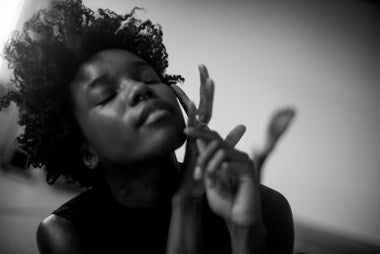
Anicka Austin is a prolific choreographer and visual artist based in Atlanta. She is a 2017-18 WonderRoot Walthall Fellow [as is the author] and current resident at the Lucky Penny’s Work Room, where she has been working on her project sunday morning at 7. In this 3-part project, a female-centric retelling of the myth of Cupid and Psyche, she collaborates with an engineer, a filmmaker, a photographer, two musicians, and 11 dancers. The piece deals with coming-of-age, mental health issues, and the often-silenced conversations around menstruation and cycles of the female body. She taps in to the healing power of movement and its necessity in our collective wellness, and our connections to our ancestral roots and to each other.
I met with her at Work Room to find out more about her upcoming project sunday morning at 7 and learn about her creative process.
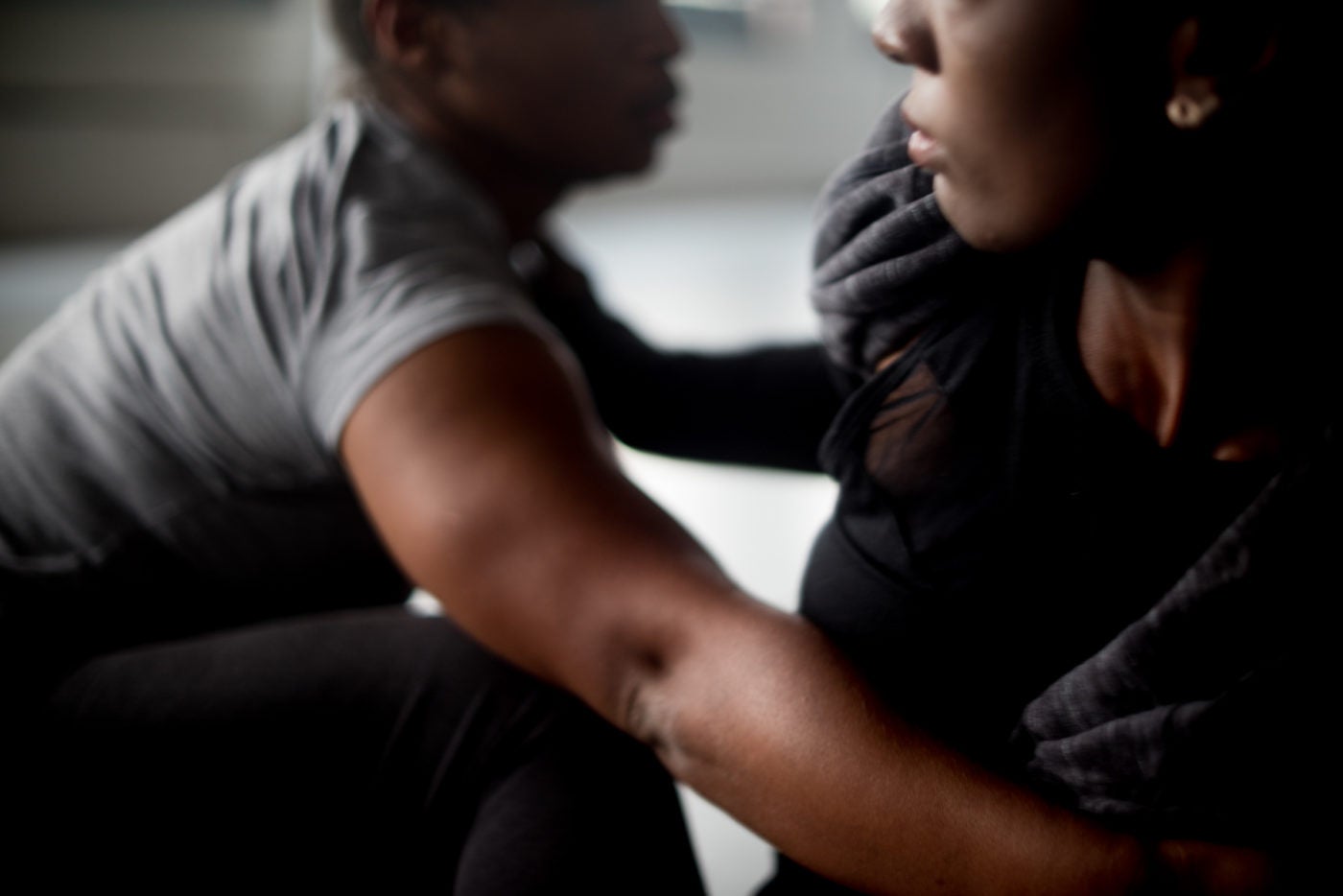
CC Calloway: Tell me about your project sunday morning at 7.
Anicka Austin: sunday morning at 7 is a three-part project. We are an engineer, a filmmaker, a photographer, two musicians, and 11 dancers … and me. The aesthetic is this bizarro, disco fantasy world we’ve created as a way to recontextualize the Greek myth of Cupid and Psyche. It is a retelling that deals with coming-of-age and the female body. Menstruation is natural, yet it’s still such a secret thing. It’s not the same as saying you have a headache or any other natural physical condition. You just don’t talk about it openly in public, and you especially don’t talk about the beauty of it, or how deeply connected we can be to cycles in general. There’s not enough conversation around the ingredients in tampons and feminine products or the cost of more natural options.
Psyche was a human who became immortal. It’s truly a coming-of-age story, and we’re representing each of the challenges she goes through as a means for growth, a way of finding herself. We’re changing the story and making it more about what we think is important. It’s a classic hero’s journey, from the perspective of many women. It’s cool because this is a super old story that has nothing to do with menstruation or disco.
So that’s the narrative around sunday morning at 7 but the actual project is very separate from that.
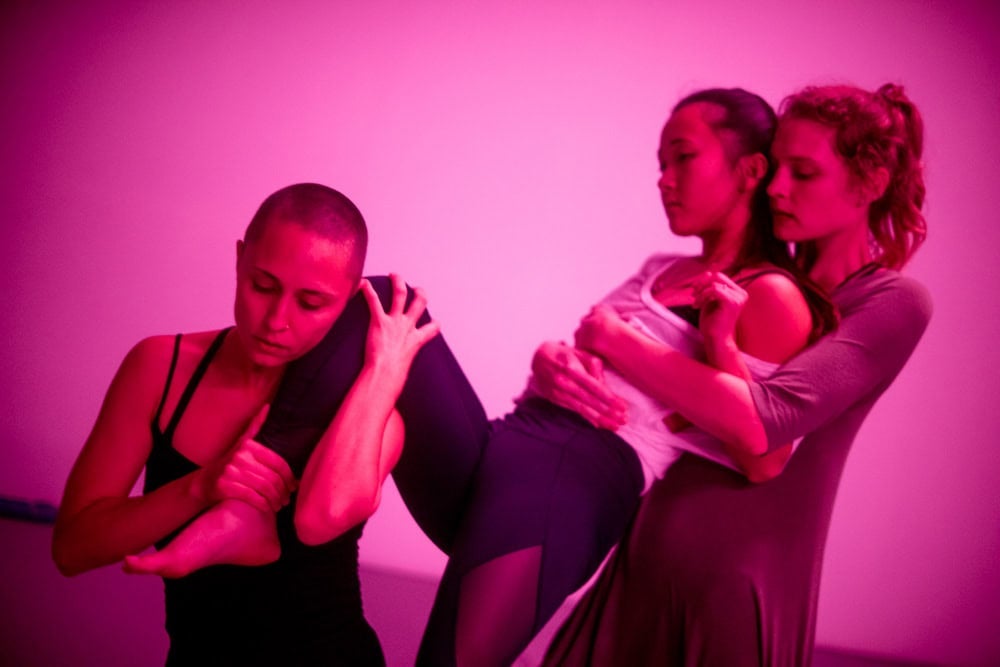
CC: Who are you working with now and what are their roles in the work?
AA: The biggest part of this project is that we’re developing ideas around an interactive educational tool to teach about the different aspects of theater. We’re letting young people know that if you pursue a career in something other than art that doesn’t mean you can’t be involved in the arts. You don’t have to leave that part of yourself to do something “more practical.” If someone had told me that when I was younger, I probably would’ve started doing what I’m doing now earlier.
We’re going to interview dancers who have jobs in administration, who have just graduated, etc., our filmmaker Lev Omelchenko, me and Deigratia Daniels, our engineer, to talk about how they choose their path and what drives them. In addition to the interviews, there’s going to be a 360-degree video of key phrases from our May evening-length performance and a tool that students can use to manipulate set design and lighting inside a digital version of the performance. They will get to design their own ballet.
Even if someone is a performance artist and is working by themselves, there are many people behind the scenes who worked with that artist to make the performance happen. Like costumes, for example, or sometimes dance companies may have a massage therapist work on the dancers. There’s never a time when I’m not working with somebody. In process, I ask my collaborators a lot of questions. The dancers, especially. There’s obviously a lot I don’t know, and it helps to have eight other people in the room who might have something to say about it. We can all put our ideas together and make it one thing.
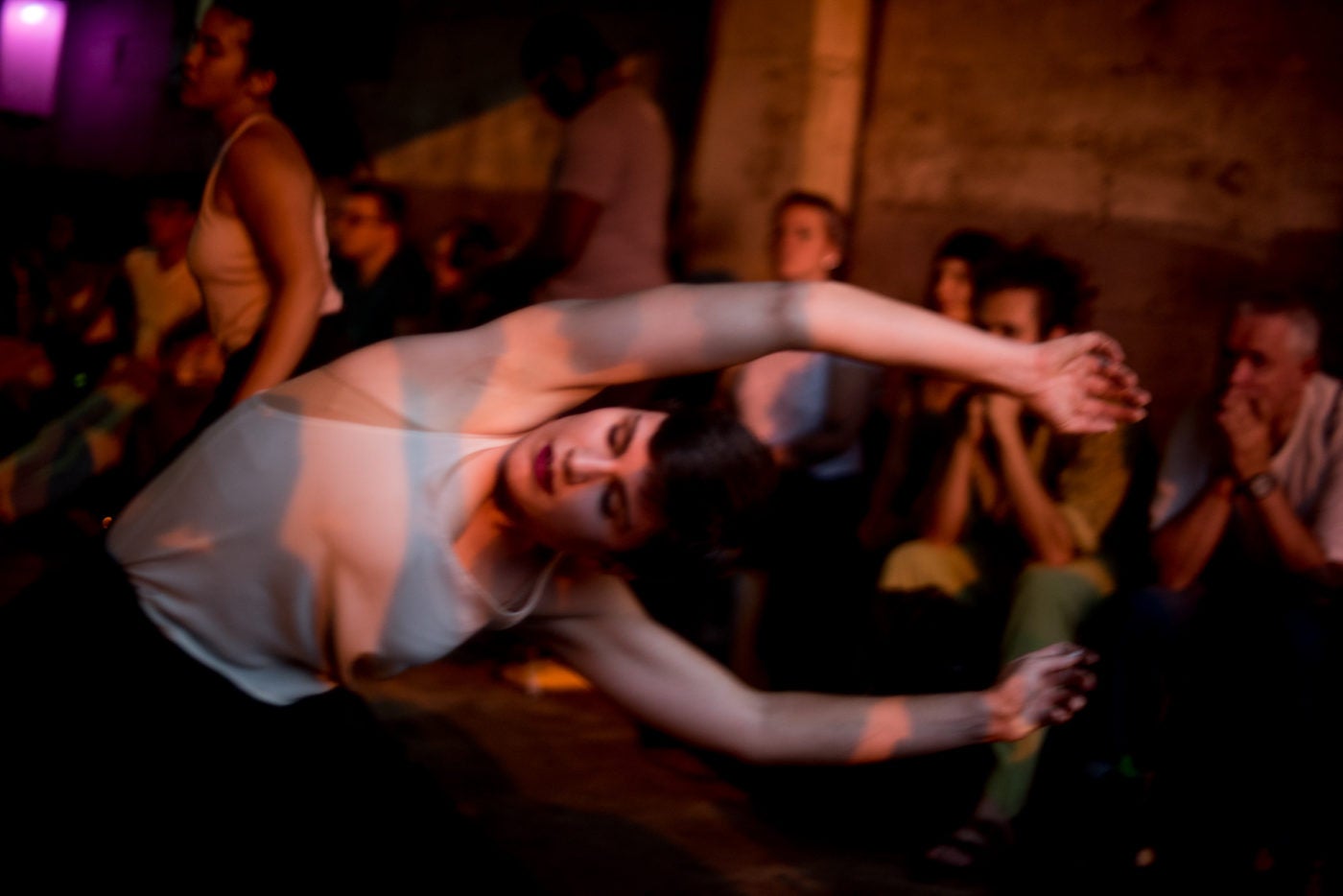
CC: Tell us about the performances.
AA: There have been three experiments so far. They’ve been kind of like pop-ups, random. It wasn’t that we really planned them, they just happened and that’s been really cool … that people have just been asking us to perform.
Our evening-length performance will be May 17-20 at The Bakery (in south Atlanta). And the full experimental film will be released later this year.
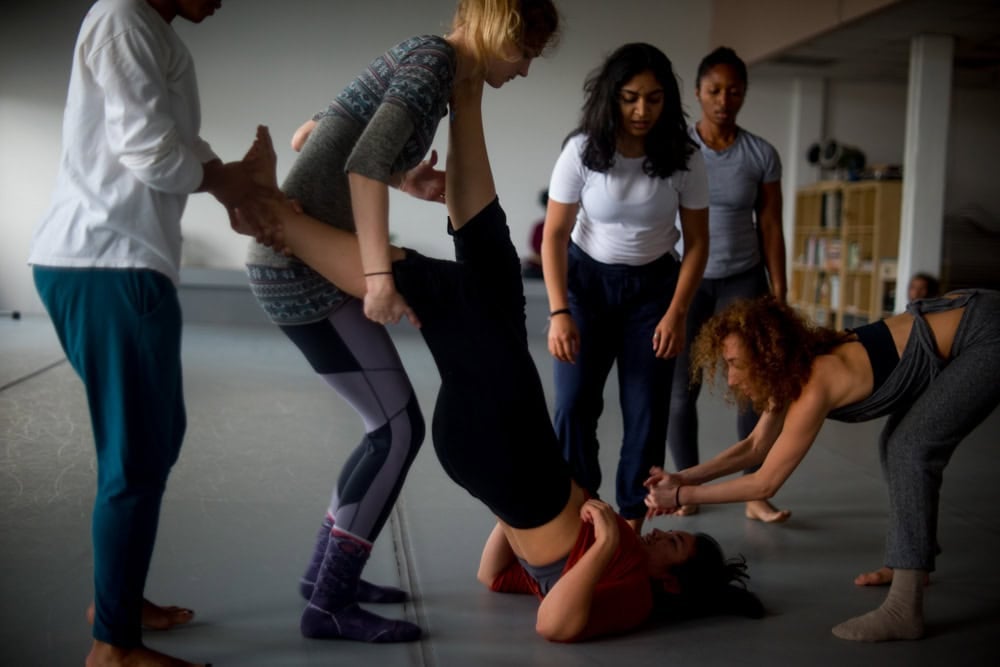
CC: Are you particular about the spaces you choose to perform in?
AA: I like to perform wherever is interesting, to be honest. The particular part is that dance requires some extra things. For example the floor can’t be just any floor for the type of movement we do. We have performed on non-supported floors before. This summer we were hosted by Argha Noah in the old Harp Transmissions building and it was lovely — crazy amazing natural lighting, raw space. We had to adjust some movement to accommodate for the floor. So, we are raising money to build a portable floor that will be safe for dancers and can be used within the dance community as a resource when other Atlanta dancers, choreographers and dance companies want to work in beautiful unconventional spaces that just happen to have concrete floors.
CC: I saw your rehearsal process, at the beginning you seemed to be doing an exercise with the dancers that was sort of meditative. What exactly was happening?
AA: We call that exercise “Environment Creating” and it’s essentially about being super present with the person you’re with. There’s a sense of presence you can create from building an imaginative world with a lot of detail around someone. The exercise allows you to really hone in on what exactly you’re seeing and what that person is experiencing inside of the world. I think it helps us be in a clear head space so that there is clarity in how they’re moving around and interacting with the space. That exercise is always a good one to start with because it puts me in a thoughtful, more direct work mode.
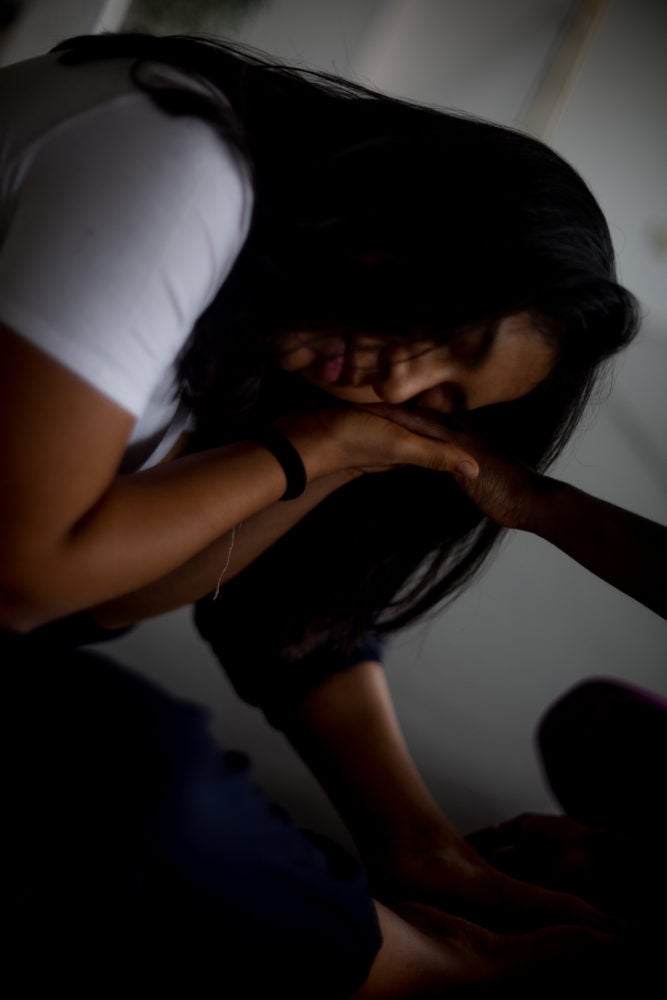
CC: How do you find your dancers?
AA: Some of them I met in school, some of them I saw performing or have danced with, and some of them I met through friends. They’re all really curious and love to experiment. I’m drawn to working with more exercise and process-based movement development, so it’s great to be around people who like that, too. It’s funny, because we meet on Sunday and it’s like church or a cool tribe. You’re in a group of people focused and concentrating on the same idea and wanting to make the most out of it. The dancers really go for it, which is something else that’s so fascinating about dance and dancers. When you’re using your whole body and imagination it’s really like a full immersion into some place or something magical or outside of reality. Something in you is being stirred around all the time and every day is different, because life is happening. Sometimes in process, you need to do a particular thing depending on how you’re feeling. It just builds on itself. It’s really cool because that just ends up being part of the work no matter what.
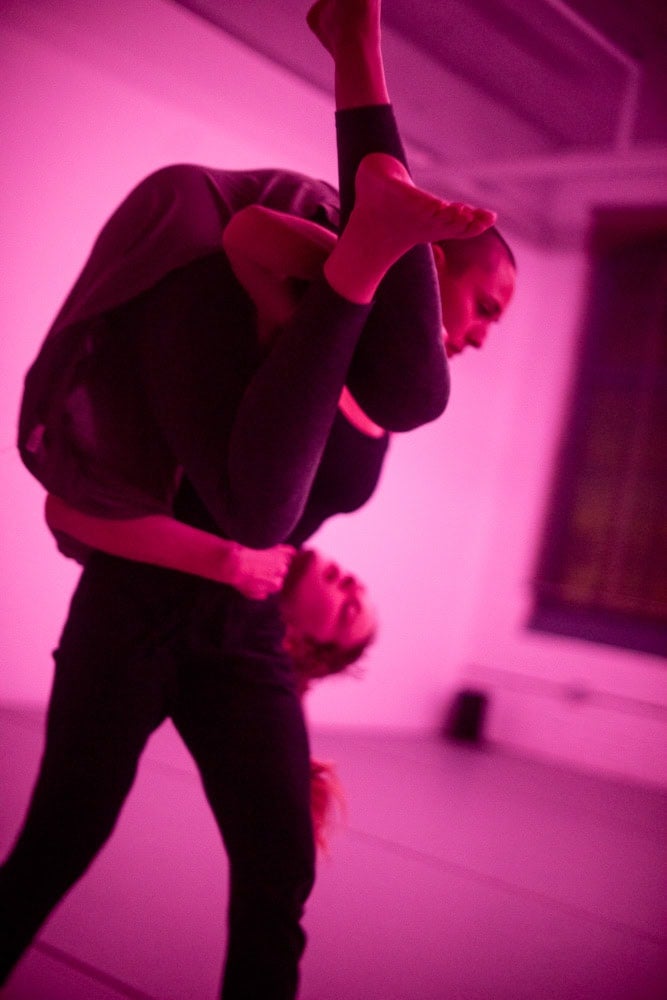
CC: What’s your process like when the dancers aren’t around?
AA: Well, it starts with an idea. Working with an already existing narrative means that there’s already some rich imagery and language to pull from. So lately, I’ve been in the studio with an idea, reading and thinking, “I wonder what could mold from this one thing” as a movement idea or a physical idea. How can this further the story and create strong narrative? Landscape has been relevant for this myth, which evokes texture and shape pretty vividly. Movement exercises are developed from those ideas or images or words.
The Bound Exercises and the Bound Lifts you saw in this last rehearsal session really molded from the concept from being entangled or held by some sort of energetic blockage that’s stopping you from getting to another place. So, how do we enact that on the environment ourselves, how do we reject that or escape from it, do we just give into it? A lot of the work comes together through building these exercises and improvisation and dialogue when I’m alone or with other people or with the dancers. We then work together within the parameters of the exercise to help the idea materialize, talk about it and do the exercise again with more information. Things change and develop from there.
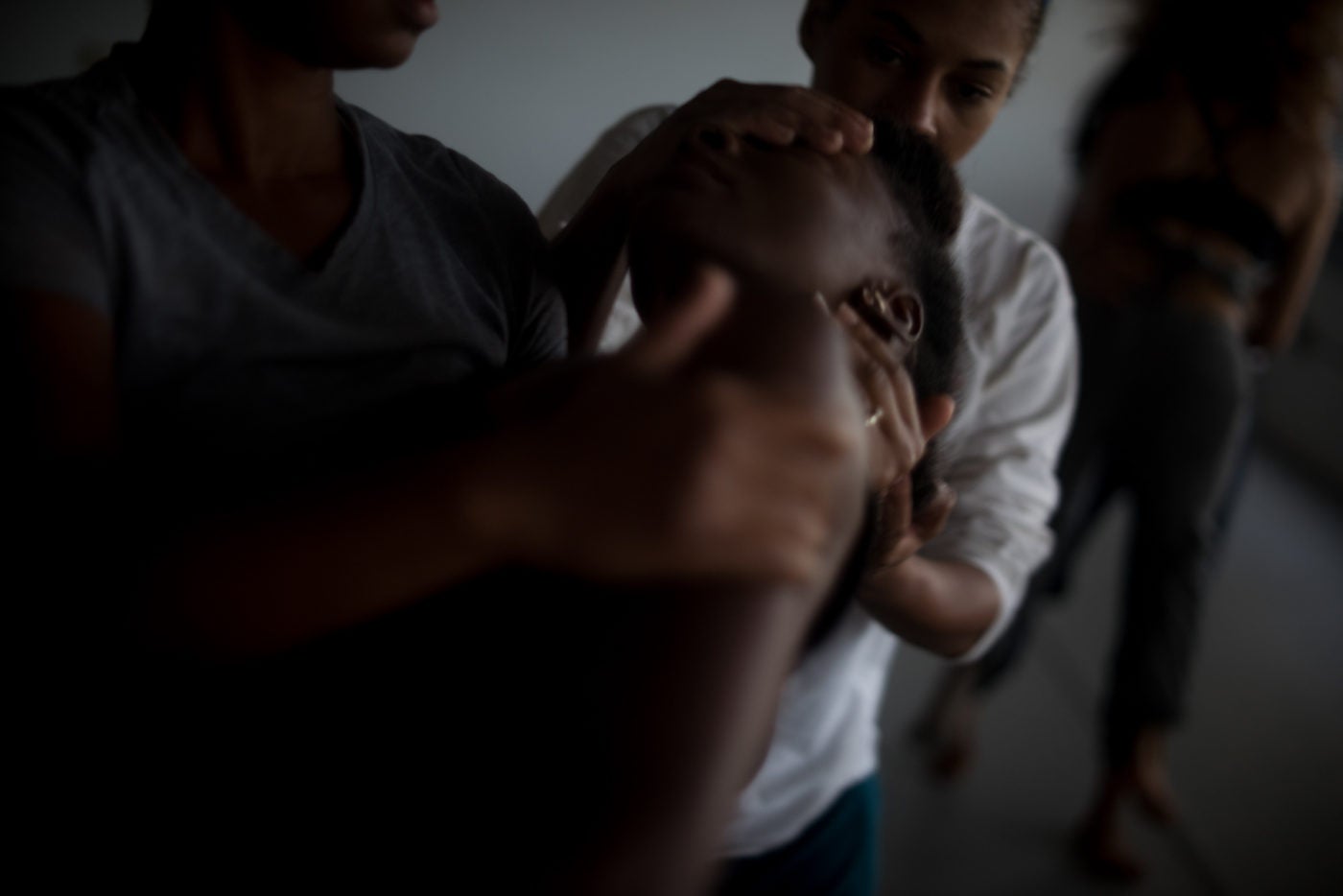
CC: When did you start choreographing? Tell us a little bit about your background in dance.
AA: I went to Kennesaw State University for Dance with a Modern concentration. Before that, though, I went to Georgia State for Psychology. When I failed the class Careers in Psychology, I realized that I definitely need to work in the arts in some way. Kennesaw is a hub for performance now so I’m grateful I started out there. I started choreographing and performing professionally about 4 years ago. Dance Chance was really a spark for that.
CC: You’re a WonderRoot Walthall Fellow this year, which is how we met, and you’ve been performing at the High Museum of Art. I’m curious, when did you start to become part of the art world? Were there boundaries between dance and art? When did you start to consider your practice an “art practice?”
AA: I probably didn’t start working in what people might consider the art world until 2016. There’s a lot that goes on around movement for me that has nothing to do with movement, and that’s the way it works for a lot of visual artists, I think. Choreography and performance revolve around the body, but you can choreograph something and not necessarily consider the body at all. You can be a choreographer with only concern for design or costumes, and you’re considering space and shape and all of these factors that aren’t the physical body. I guess that’s why a lot of people in visual arts know of the choreographer Merce Cunningham, because that’s really what he based his work around. Amazing, technically proficient dancing, but also the artfulness of the environment.
All choreography and dance is art to me. I don’t think it shouldn’t be included in traditionally visual art spaces. I do understand that some art spaces don’t have the facility for it, but calls for art typically exclude performance as if performance is not art. I think a lot of dancers aren’t in the “art world” because there is not as much infrastructure for it here. Things are changing with that.
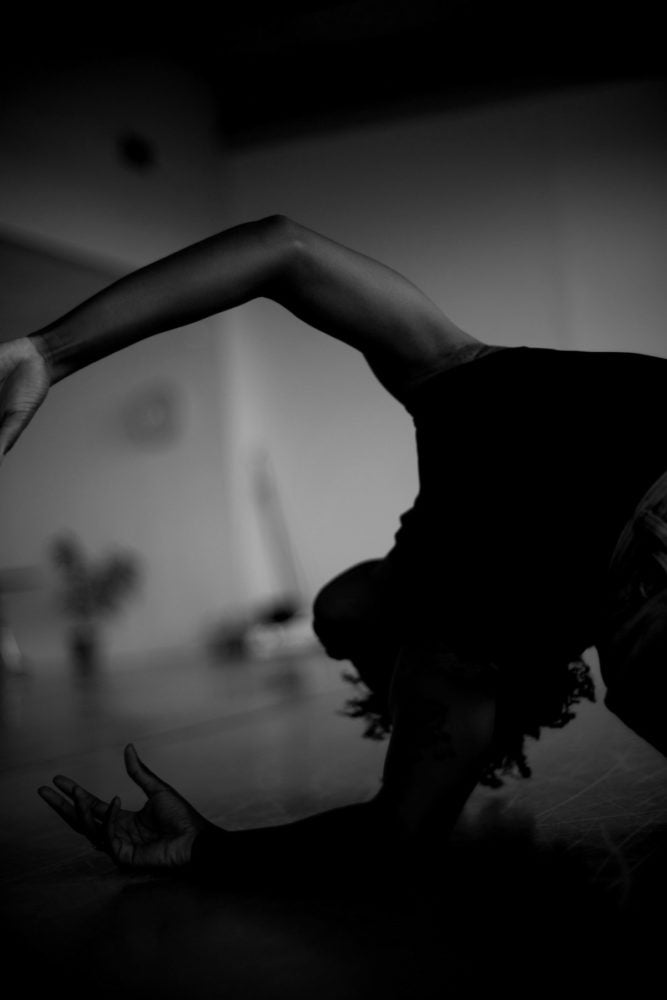
CC: Where do you see your work going in the future?
AA: I’d like to keep working in unconventional places and have abundant space and time to make things that are fully fleshed-out and well researched. When you self-produce shows, there’s a lot of work involved that has nothing to do with your art-making, so I’d like to be able to focus less on all of that and more on the art. I would love to get to spend time with dancers all day, every day. Right now, I work with them one day out of the week. I want all of us to be able to work full time — you know, logistical things like that.




